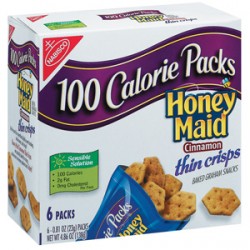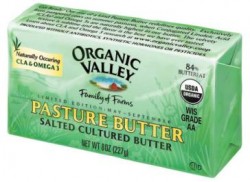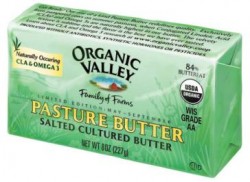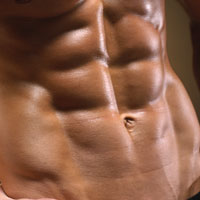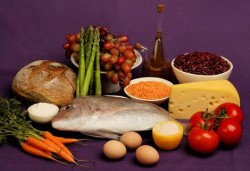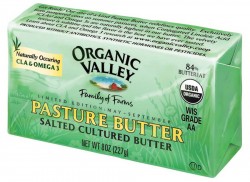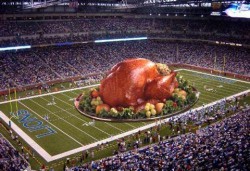The Glycemic Index – Awesome or Overrated?
April 25, 2011 by danny · Leave a Comment
Over the years I’ve gotten quite a few questions regarding the glycemic index. While I think it is a decent tool, it is definitely NOT the be-all and end-all as some infomercials like to claim; “the secret to our diet’s incredible success is the breakthrough science known as the glycemic index!” Yeah. Ok. Riiiiight. Below, I’ve copied and pasted a portion of a Q and A that Dr. Jonny Bowden did awhile back. He does a great job of explaining why the glycemic index is overrated, and why the “glycemic load” may be a more accurate indicator of healthy foods. I’ve also highlighted in RED the take-away message that I want you to get out of this Q and A. The more knowledge you have, the body chances you have for a lean, healthy body!
Q: I read that the glycemic index is overrated and that what we should really be paying attention to is glycemic load. What’s the difference?
A: The glycemic index is overrated. You should be paying attention to glycemic load. There’s a big difference. Here’s the scoop:
Glycemic index is a way of measuring the impact a given amount of carbohydrate has on your blood sugar, something you definitely want to know. But to do a fair comparison, they have to use a fixed amount. In the case of the glycemic index, it’s a standard 50 grams of carbohydrate.
Problem is, very few carbohydrate foods in real life are 50-gram portions.
See, if you go to a store to buy spices and there’s a spice that’s $500 a pound, that sure sounds like a lot of money. But if you’re only buying a half-teaspoon of the stuff, it’s pretty irrelevant. You want to know what you’re going to pay at the register, not necessarily what you’d pay if you bought a pound.
Similarly, you really don’t care what the impact of 50 grams is on your blood sugar; you care what the impact of the amount you’re actually eating is.
Glycemic load is a more sophisticated formula that takes into account the actual grams of carbs you’re eating — the portion size. The glycemic index of carrots is high, leading a lot of people to think you should never eat carrots, which is a dumb conclusion. Fact is, the average carrot has 3 grams of carbs. You’d have to eat like a giant rabbit to have a significant impact on your blood sugar.

The glycemic load of a carrot, on the other hand, is only 3, making it an extremely low-glycemic food — unless you’re drinking pure carrot juice or eating 13 carrots at a sitting.
Pasta, on the other hand, has a moderate glycemic index, but is almost never eaten in 50-gram portions. Factor in the portion size at a typical Olive Garden and your blood sugar will be on the roof, and stay there for a week. Not surprisingly, the glycemic load of pasta is very high.
The technical formula for glycemic load is GI (glycemic index), multiplied by the number of grams of carbohydrates in the portion, then divided by 100. Low glycemic load is between 1 and 10, medium is between 10 and 20, and anything over 20 is very high.
That said, remember that both glycemic index and glycemic load only refer to the food eaten alone. Add some fat or protein and the total impact goes down. And plenty of high-glycemic foods are good for you (say, carrot juice) while plenty of low-glycemic foods (fried donut holes) are not.
So take glycemic load into account, but don’t be a slave to it. It’s just one measurement to consider when planning a diet.
Incidentally, athletes in training actually can benefit from high-glycemic foods, especially when they’re training twice a day. Mrs. Smith with Metabolic Syndrome… not so much!
Fat And Where It’s At…
April 21, 2011 by danny · Leave a Comment
Our society went low-fat in the 80’s and diabetes became a disease that swept the nation. Low-fat this, non-fat that, more carbs here, more carbs there. That is one way to sum up the diabetes problem (along with other health related diseases). But of course, there is more to the story than: decreasing fat and increasing carbs = diabetes. Don’t get me wrong, I am NOT anti-carb at all! Like America always seems to do, we took this to an extreme (eat as low fat as possible and the majority of calories we consume should come from carbs). While this is old news and most people in the nutrition/fitness/health game now realize that we should include more healthy fats and less processed carbs, I don’t think the message has completely gotten out to the masses.
More times than not, when I have a new client come into see me to talk nutrition for the 1st time, I get the inevitable: “when shopping I make sure to get fat-free or reduced fat products as much as possible.” Fat has many benefits. Yes, fat has more calories per gram (9 cals) than protein and carbohydrates (4 calories), so we need to keep that in mind when consuming fat. But it’s not ALL about total calories (although still important). The quality of calories consumed is a huge piece of the puzzle.
Below, I’m going to look around my house and let you know what healthy fats are currently in my place.
-Nuts: Almonds, Pecans, Walnuts
-Fish Oil Capsules – I recommend getting about 2 grams of combined DHA/EPA per day
-Butters: Natural Peanut Butter, Almond Butter, Cashew Butter, Butter (Organic Valley Pasture Butter)
-Organic Extra Virgin Coconut Oil (We cook with this a lot!)
-A package of ground flax seeds
-Extra Virgin Olive Oil
-The fat that comes from the food in my fridge… grass-fed beef and organic free-range eggs. I no longer eat just the egg white and suggest to all my clients that they eat the whole yolk as long as it comes from a quality source (free-range).
Now, there are definitely other healthy fats in this world, but the above list is what is currently en mi casa (is that proper Spanish? I don’t know, it’s been awhile for me ![]() ).
).
Below, I’m going to copy and paste a portion of what nutrition expert Brian St. Pierre had to say about full fat dairy in his nutrition contribution to Eric Cressey’s excellent product, Show And Go. As you will see, if the fat comes from a quality source, there are many benefits that you’ll be missing out on, if you go fat-free or reduced-fat.
Real Butter, High Blood Pressure, and Help With Baby Names…
April 4, 2011 by danny · Leave a Comment
I have to give props to Brian St. Pierre, as he consistently puts out great information. Today I’m going to copy a couple links to the last two blogposts he has made on his site because I think many of you will be interested in the topics. Sometimes we trainers like to talk about topics such as ”exercisesto strengthen the serratus anterior.” While important, this can have you falling asleep at your computer. But when it comes to butter and high blood pressure, that’s where it’s at! I mean, who doesn’t like to add a little butter to their meal here and there? And who doesn’t either have, or know someone with high blood pressure?
The Truth About Real Butter Here, Brian discusses whether or not butter should be a part of your nutrition plan. (Hint: It really depends on the source). Besides butter, there is some other great info in this article. Definitely worth a read!
How To Decrease High Blood Pressure In America we love to medicate (i.e. over medicate). As usual, the best medicine is food. Don’t get me wrong, there is a time and place where meds are needed. But if we would just focus on whole, unprocessed foods, often times meds wouldn’t even enter the conversation. In this piece Brian discusses foods that will help bring that high blood pressure down (or keep it down if it is currently at a good level). After reading this post, I forwarded it onto some friends and family members that have high blood pressure. I suggest you forward it onto anyone that you know that has high blood pressure or that is looking to keep their blood pressure down. So I guess that means you need to forward this onto everyone in the world… just do it. ![]()
Finally, my wife is over 30 weeks pregnant with twins. Because we’re cool like that, we are not finding out the sex of the babies. We have 1 name for each sex that we like (Daxton and Capri). BUT, what if we end up having two of the same sex? I’ll tell you what, we’re screwed! As of now, we can’t agree on a second name for either sex. We’re looking for a second name that is unique AND super-duper-luper-muper awesome! Any suggestions? Please help!!! ![]()
My Interview with Kelly Olexa…
March 17, 2011 by danny · Leave a Comment
Kelly Olexa puts out her “Wednesday WOOT! Factor” on, well, Wednesdays (makes sense – she’s more than just a pretty face ![]() ). Kelly has great energy and a very positive attitude! So when she asked me to be a part of this Wednesday’s WOOT!, I was happy to oblige.
). Kelly has great energy and a very positive attitude! So when she asked me to be a part of this Wednesday’s WOOT!, I was happy to oblige.
Hey Everyone!! Welcome to today’s Wednesday WOOT! Factor! - sponsored by Sears(R) FitStudio! WOOT! Today I am happy to share an interview with Danny McLarty, another member of our FitStudio team. I have learned a LOT from Danny since connecting with him through our Sears(R) situation– you will also find him contributing on the FitStudio Facebook Page.
DEFINITELY check out his blog and also his great YouTube channel for a boatload of instructional videos!! Holy Wow!! ![]() YouTube.com/DMcLarty7.
YouTube.com/DMcLarty7.
Join us tonight on Twitter at 7:30pm CST for our weekly FitStudio chat!! Follow #FitStudio at just hop on in to gab!!
1. When did you first start working out and why?
I’ve been active in sports all my life, so I guess I was “working out” without even knowing it back when I was 6 or 7. I was obsessed with muscles at a pretty young age. My mom still laughs and says to me; “do you remember when you used to play with your He-Man toys and say; ‘mom, who do you think has bigger muscles, He-Man or Skeletor?’” Ha! As far as when I started lifting weights, that began in high school. I didn’t really know what I was doing, but I badly wanted to learn, and really loved it right off the bat!
Read this rest of the interview HERE.
I’ve Lost A Lot of Fat, BUT, I’m weaker. Please help!
March 8, 2011 by danny · Leave a Comment
The other day, my good friend Matt Brewer sent me the following e-mail:
“Quick questions – I’ve been busting ass in the weight room ever since I was in Las Vegas and continued to do so after my return to Omaha, but when Megan got pregnant I ate whatever she had a craving for and gained an enormous amount of weight. At the same time I was getting stronger and stronger but fatter and fatter. I hate using bench press as a bench mark (like what I did there?) for strength but for this purpose it works: I was repping out 315 x 5 for my last set but my gut was carrying around 220 pounds.
Last summer/fall Megan and I got our crap together and started eating right. I felt that if we are going to raise a healthy kid we might as well start with ourselves and get healthy first to serve as a good example for him. Since then, I’ve lost 45 pounds and am currently weighing in between 174-176 pretty regularly. I incorporate cardio and still do a lot of strength training. I haven’t changed my routine a whole lot; only changed what I was shoveling in my mouth.
One thing I’ve noticed though is my strength has gone down significantly. I’m not starving myself, but I just don’t seem to have that ‘pop’ when pressing weight out. Do you think the significant weight loss has had a direct effect on my strength and if so, how do i get it back without packing on the fatty pounds? I’m just wondering if I need to consume more calories so my body isn’t eating up muscle tissue for energy.
Thoughts? Funny comments? Jokes about my tubbiness?”
My response:
First of all Brewer, I’m glad to hear that you and Megan are now setting a good example for your little one. This out of shape/obesity problem that we have in America, starts with the parents. After all, the parents are the ones that bring the food into the house! Too, kids are very impressionable, so it is important for your son to see you both living a healthy, active lifestyle. Keep it up Megan and Shrew Dog!
And now, to answer your question:
Think about it this way: let’s say that when you were 220 lbs, you were 20% body fat (for the sake of easy math). That means that even know you were carrying 44 pounds of fat, you were also carrying 176 pounds of lean body mass (much of which is muscle). Now, at about 175 lbs, let’s say you are down to 10% body fat. That means that you are carrying about 157 pound of lean body mass. So, even know you are now prettier, healthier, and more athletic, you are not going to be able to lift as much with this reduction in lean body mass. This is why you’ll see many fat powerlifters – they purposely put on as much weight as possible so they can lift as much as possible. Make sense?
So, part of the problem of not being able to lift as much, is just something you’re going to have to deal with. IMO, the pros greatly outweigh the cons. BUT, if you time your carb intake around your workout (peri-workout), you can get that “pop” back that you mentioned you no longer feel. So, eat healthy carbs pre/during/post workout and try to minimize carb intake the rest of the day. You could just eat healthy carbs pre and post-workout with some protein… sweet potatoes + chicken OR rice + grass-fed beef etc. I NEED to eat during my workout, or I lose that “pop.” So, I go with organic raisins + whey protein powder during the workout, or Surge (from t-nation). But you don’t necessarily need this if you feel full of energy with the pre-workout carb + protein meal (which should be eaten 45-60 minutes prior to workout – depending on how BIG of a serving you eat).
Finally, once you start to time your carb (“energy” meals) meals around your workout and your body adjusts to heavy lifting at this reduced body weight, you may just be able to get back to the strength levels that you enjoyed when you were 220 lbs. Keep at it and continue the great work buddy!
The Real “Main Reason” To Workout
March 1, 2011 by danny · Leave a Comment
If I were to take 3 random people and ask them: “what is the main reason you work out?” If they were being honest, I’d probably get answers that look something like this:
-so I can have washboard abs
-to get BIGGER gunz!
-so I can have a nice booty
 I’ll be the first to admit, going to the gym in attempt to improve my physique has motivated me for years – and will probably continue to be the case for years to come. But when we take a step back and think about it, the main reason for working out and eating right, is because it is GREAT for our health. My 59 year old client (we’ll call him “Sam”) came in to train with me a few months back after he went into see his doctor only to find out that he was pre-diabetic. Sam had trained with me about 4 years ago but then took time off only to let himself get out of shape. He had been e-mailing for the past 1.5 years saying that he plans on getting back in to work with me. Well, after the news he received from the doc, it was time for Sam to finally put his foot down and get back to the gym. If Sam would have continued down the path that he had been going, the quality of his life would have greatly changed, and diabetes was inevitable.
I’ll be the first to admit, going to the gym in attempt to improve my physique has motivated me for years – and will probably continue to be the case for years to come. But when we take a step back and think about it, the main reason for working out and eating right, is because it is GREAT for our health. My 59 year old client (we’ll call him “Sam”) came in to train with me a few months back after he went into see his doctor only to find out that he was pre-diabetic. Sam had trained with me about 4 years ago but then took time off only to let himself get out of shape. He had been e-mailing for the past 1.5 years saying that he plans on getting back in to work with me. Well, after the news he received from the doc, it was time for Sam to finally put his foot down and get back to the gym. If Sam would have continued down the path that he had been going, the quality of his life would have greatly changed, and diabetes was inevitable.
He had a follow up appointment with his doctor last week to see if his workouts and improved nutrition would have a positive effect on the numbers for the various tests (glucose levels, cholesterol, etc) that raised so many red flags just 3 months ago. Well, when Sam came into his training session today, I’m thrilled to say that not only are his numbers improved, they are so much better that the doctor said he COULD NOT BELIEVE how much better they look! He told Sam that no meds are needed, and that he just needs to continue down the same path that he has been on! His HDL (good cholesterol) is the best that it has been in years, and he is down 16 pounds. Keep in mind that when Sam came back to see me, it was the holiday season. For most people it’s considered a win just to maintain weight during this time of the year. This makes Sam’s results all the more impressive!
The Secret Sauce
The secret to his success is, that there is no secret. Sam shows up 3 times a week every week to train with me (and his training partners). And he has greatly improved his nutrition. So if there is a secret sauce it is this: consistency + discipline = results. His hard work has paid off and Sam is now the poster-boy of how to fight off diabetes and live a long, healthy life!
Follow Me On Twitter…
February 13, 2011 by danny · Leave a Comment
“You never know ’til you try.” For the most part, I like that quote. We can speculate all we want, but until we actually try something, we won’t really know if we would like it or not. I do have a few things I’ve tried in my life that I greatly regret. For example, back in 1989 I decided to root for the Green Bay Packers just one time. I thought, who knows, maybe I’ll actually enjoy the game if I root for these guys. I found out that I hated it, and that doing so ended up to be a very bad idea. As it turned out, rooting for these punks made me so sick that I couldn’t get out of bed for an entire month. Moral of the story; nobody, and I mean nobody should ever root for the Packers! ![]()
OK, moving right along. When I first heard about Twitter I thought it sounded like the stupidest waste of time ever. I mean, I don’t care if you …”Just slammed 3 #beers and now I have to pee so badly!” People wasting their lives on their phone/computer tweeting out this crap seems pointless to me. But then my friend Sarah Hoffman told me that I should really get a twitter account. I agreed, and she was nice enough to set it up for me (because setting up my own account is waaaay too complicated for me!).
At first I popped onto twitter very occasionally and didn’t think I’d really get any benefit from it. But a couple weeks ago I decided to be open-minded and start using it more often. And I can honestly now say, that I see the value. It’s a great way to quickly get out information. For me, that means I can link to the blogposts and the articles that I write. It also means that I can get my hands (eyes) on more great info that others tweet. And I can pass on (tweet & retweet etc) great basketball, training, and nutrition info that more people can learn from. So in the end I guess twitter has the possibility of making the world a better place.
Also, a lady and I from Ohio ended up following one-another after we talked smack back and fourth during the Carolina-Duke game the other night. I admit, I started it because “we” were looking very good during the first half. But in the end, she got the last laugh as stupid Duke came back to win. By the way, our smack talk was both good-natured… I can’t stand Internet tough guys/girls that act like they are bad asses over the ‘net! As it turns out, Twitter is a great way to network, meet new people in a fun setting (i.e. the Duke fan and I “going at it” during the game), and get quality info to pass out right away.
In the end, “you never know ’til you try” can go a few ways…
-You try, and don’t like it. At least now you know.
-You try, you like it. Now you know and the quality of your life improves (like me now enjoying Twitter).
-You learn from others that have already tried and you realize that you should never cheer on the Packers. Don’t waste your time trying this one my friends… it’s just not worth it.
You can find me on Twitter right HERE.
To The Parents and Athletes That I Work With…
January 19, 2011 by danny · Leave a Comment
I’ve gone over the importance of nutrition with my clients/athletes many times over the years. But this particular post is intended for the basketball players that I coach/train at Dougherty Valley High School. After a recent conversation that I had with a few of the players I realize our, “the importance of nutrition,” conversations just aren’t sinking in. Parents, I know each and every one of your kids clean up their room the very first time that you tell them to. ![]() But for some reason they haven’t applied the nutrition information, even though we’ve talked about it a number of times… go figure!
But for some reason they haven’t applied the nutrition information, even though we’ve talked about it a number of times… go figure!
For the record, the majority of our players need to add strength AND size. So this blog post is geared to those goals, rather than the “fat loss” clients I train (although some of the principles will apply to anyone, regardless of their goals).
A recent conversation I had with a couple of the players after one of our weight training sessions;
Me: So, what did you have for breakfast this morning?
Player: Nothing
Me: What!!!???!!! And what about you?
Different Player: Nothing.
Me: Are you kidding me!?! What is the most important thing to getting bigger and stronger?
Them: Food.
Me: I’m not sure what to think.?. You know the answer, which is a good thing, but that means you are consciously deciding not to eat the way you need to, to achieve your goals?
Player: Well, I was tired when I got up, and I didn’t have time and blah, blah, blah, blah, blee.
Me: Well, I have similar goals as most of you players – to gain size and strength. Do you know what I typically have by 11 a.m. every day (which was about the time of our conversation)? It looks something like this…
-7 a.m. – a bowl of oatmeal with berries + protein powder + almond butter (plus a fish oil capsule + 1000 I.U.s of vitamin-D)
-10 a.m. – a serving of sweet potatoes + grass-fed beef + veggies + an apple (or similar)
Right when I finish this lifting session, I’m going to go home and eat again. Then, I do the same thing every few hours throughout the course of the day. And here we are at 11 a.m. and you haven’t even had one bite to eat. Add to that the fact that you just practiced for 2 hours running up and down the court. Then we lifted after practice, and now here we are (a few of the guys stayed in the weight room after our lifting session to talk - and support me while I showed them how it’s done, with my lifting session) ![]() . All of this while on an empty stomach?!!!!!!!? I’d rather put a fire out with my face than to go through all of that without a single bite of food in my body! And you wonder why you are having a hard time gaining weight?
. All of this while on an empty stomach?!!!!!!!? I’d rather put a fire out with my face than to go through all of that without a single bite of food in my body! And you wonder why you are having a hard time gaining weight?
Player: I know coach, I know. I eat breakfast sometimes. I’ll try to do it every morning for now on. But what about during school? How am I going to eat every few hours when I have class all day?
End conversation.
After reading the above conversation you can see it is pretty clear that these athlete’s nutrition is sub-par, to say the least. I’ve found this to be true across the board with high school athletes (with rare exception). But I can hear it already; “not my kid, he eats so much it is not even funny!” Well, a couple big meals and a bunch of missed meals throughout the day is not even close to enough. Especially when he is running up and down the court for a couple hours nearly every single day. The players are always saying this to me; “geez Coach, you’re eating again?! Every time I see you, you are eating something!” Well yes, when you have a hard time gaining weight (and even maintaining weight), you have to go OUT OF YOUR WAY to get enough calories in.
Since the bar is currently so low, I’m not asking for perfect nutrition. I’m just looking for baby-steps. So here is what I want…
Carbohydrates List
Whole wheat pasta, rice, quinoa (pronounced keen-wah), whole grain bread, any potatoes (red potatoes, sweet potatoes etc), organic milk, almond milk, yogurt (preferably Greek Yogurt)
Protein List
Grass-Fed Beef, Chicken, Fish, Eggs, Turkey (not processed deli meat), Quality Protein Powder
Fats
Fats that come from the animals you eat, nuts (not just peanuts), fish oils, flax oil, extra-virgin olive oil, coconut oil (great to cook with), natural peanut butter, almond butter
While the above is not an exhaustive list, it still gives you plenty of options. I try to do most of my shopping at Whole Foods or Trader Joes (not as expensive as Whole Foods) so that the majority of my food is hormone free, organic etc. If you are new to this whole “improve your nutrition thing,” just make sure your kids are consistently getting foods from the above list, and worry about the organic/free-range stuff later.
So, what I want you to do at each meal…
-pick one food the carbohydrate list and eat it at each meal
-pick a food from the protein list and eat it at each meal
-incorporate healthy fats whenever you can throughout the day.
-drink a “ton” of water
-include at LEAST 2-3 servings of fruit per day, and 2-3 serving of veggies per day
Follow this most of the time and allow yourself “cheat meals” from time to time. You know, pizza and stuff like that. This is acceptable, as long as it is not the staple.
We don’t need to make it any more complicated than this. I’m hoping that the parents (after all, you’re the one that is going to be buying the food) and players will both read this post and work together to ensure better nutrition, which will go a long way to a healthier, more successful athlete/person.
The recipe for a stronger, more explosive athlete = hard work in the weight room + consuming a lot of high quality calories all day every day. Let’s make sure we do NOT leave any ingredients out of this recipe!
*** Just make sure not to leave the bottle in your locker over the weekend. The soccer/football client that I mentioned above did that only to return to school on Monday to a locker full of ants. EVERYWHERE!
Nutrition Myths?
December 28, 2010 by danny · Leave a Comment
Today I want to talk about a couple nutrition related topics that are myths? Or are they? When it comes to nutrition we don’t really KNOW anything for sure. What we “knew” in 1980 has turned out to be wrong (in many cases). What we “knew” in 1990, same thing. What we “know” today, people may look back in the year 2030 and laugh at us. But today, all we can do is go off the information we have at hand. With that said - many people have “known” forever that eating food with saturated fats and cholesterol is bad for us. And we’ve also “known” for quite some time that eating many (6-ish) meals per day will speed up our metabolism…
Myth #1: Eating 6 small meals per day will speed up our metabolism more than eating 3 meals per day
Meal Frequency – We all “know” that eating frequently speeds up our metabolism. I’ve been told this ever since I got involved in working out. If you look at the TEF (Thermic Effect of Food) you’ll recall that it burns calories to breakdown and use the foods that we eat. Conventional wisdom tells us that if we eat often (5-7 meals per day), we can get this fat burning TEF more often throughout the day. BUT, research is now showing us that although we get this effect more often, the effect is less pronounced with each smaller meal that we eat. So basically it looks like this:
Thermic effect of 6 smaller meals – smaller thermic effect per meal
Thermic effect of 3 larger meals – larger thermic effect per meal
Essentially, at the end of the day, the thermic effect is going to be the same whether we eat 3 meals or 6 meals (assuming total calories are the same). WOW! All these years we’ve ALL been wrong about meal frequency and its role on metabolism (if you were saying this years ago, you were wise beyond your years. Or simply lying about it now). I do still think there are advantages to eating a little more frequently (like the fact that frequent eating helps many avoid getting to that panic starving state that has you pulling into the 1stCrispy Crème that you come across), but apparently helping speed up metabolism isn’t one of them.
I first heard this “myth” talked about by Alan Aragon. But who knows, in the future we may do more studies telling us that our original thoughts on meal frequency were right on (as in, it DOES speed up metabolism). But for now, it does appear to be a myth. I want to reiterate, I DO think that many people get better results with eating more often for a few different reasons. Just know that speeding up your metabolism is NOT one of those reasons.
Myth #2: We should avoid foods containing cholesterol and saturated fats
Many people think this for a couple reasons. 1) poorly conducted and misinterpreted studies have been done on saturated fat and cholesterol. The misinformation from these studies get passed on from generation to generation and become “fact.” Check out Stephan Guyenet’s website for all the saturated fat/cholesterol information your heart desires. 2) The media (although I have recently seen some of the media come around on this – there is some hope from the media! ![]() ) is still saying that saturated fat and cholesterol are the devil. And the media reaches the largest number of people, making the average non-researching Joe more and more misinformed.
) is still saying that saturated fat and cholesterol are the devil. And the media reaches the largest number of people, making the average non-researching Joe more and more misinformed.
There have been many smart people that have already wrote articles on the saturated fat/cholesterol is bad for us myth. So I am not going to reinvent the wheel here. I really like this article talking about the benefits of eating the whole egg as opposed to just the egg whites. You’ll see that the topic of cholesterol is addressed. Here is a good quote from the article…
“First of all, when you eat a food that contains a high amount of dietary cholesterol such as eggs, your body down-regulates it’s internal production of cholesterol to balance things out. On the other hand, if you don’t eat enough cholesterol, your body simply produces more since cholesterol has dozens of important vital functions in the body.”
The bottom line, don’t fear food if it has a little cholesterol in it. And when it comes to saturated fat, what is the quote? “Don’t throw the baby out with the bath water,” I believe. In other words, foods like eggs that come from free range chickens, grass fed beef, organic extra virgin cocunut oil, and pasture butter to name of few, have a good amount of saturated fat in them and are healthy choices.
Some foods have saturated fat in them AND a ton of sugar, AND a ton of processed carbs, AND trans-fats. But for some reason, all too often saturated fat gets much of the blame. If they started to put crack in all of the water we drank, that would be like me blaming the health problem on the water, rather than the crack. Again, don’t throw the baby out with the bath water. Incorporating the foods I mentioned above SHOULD be a part of your nutrition plan.
Myths or not? I’m not sure. But for now, I believe the way the average person looks at cholesterol and saturated fat should be revisited. And don’t freak out if you only get 4 meals in today, your metabolism will be just fine.
No Holiday Blues For You!
November 17, 2010 by danny · Leave a Comment
I hope everyone is doing well as we get closer and closer to Thanksgiving week. Stay disciplined for another week and feel free to let loose a bit on Turkey Day. You have my permission (as if you need it ![]() ). The key is to get back on track asap! (as in, Friday morning after Thanksgiving) I’m confident that you won’t ruin all of your health and physique goals if you jump back on the training/healthy eating wagon sooner rather than later. Do NOT, I repeat do NOT, have this mindset… “well, I really blew it yesterday with all that gravy and extra serving of pumpkin pie and those 6 cans of Old Milwaukee (yeah that’s right, I said Old Milwaukee) and then I felt extra sick after watching yet another Thanksgiving Day Lion’s game.
). The key is to get back on track asap! (as in, Friday morning after Thanksgiving) I’m confident that you won’t ruin all of your health and physique goals if you jump back on the training/healthy eating wagon sooner rather than later. Do NOT, I repeat do NOT, have this mindset… “well, I really blew it yesterday with all that gravy and extra serving of pumpkin pie and those 6 cans of Old Milwaukee (yeah that’s right, I said Old Milwaukee) and then I felt extra sick after watching yet another Thanksgiving Day Lion’s game.
I might as well kiss my goals good bye and head back to the fridge for leftovers today. Plus, Christmas and New Year’s are right around the corner. On January 2nd (because January 1st you’re still nursing your hangover and the last thing in the world you are going to do is prepare healthy meals on this day… especially with all the great Bowl games on) I promise I’ll start to be good again.” Meanwhile you, like most Americans just gained an extra 15 pounds (or whatever the national average is) over the holiday season and you’re starting your resolution from a big deficit.
Don’t be that person. Enjoy the holidays, enjoy your family, cheat a little, and make sure to get back on track RIGHT AWAY. I’m posting this a week before Thanksgiving in hopes that this will sink in and give you plenty of time to get your mind right before “going into the battle,” that is the holidays.
And by the way, I’ll be posting some sample workouts for those that “are just too lazy busy” to get your workouts in during this crazy time of the year. These workouts will take you ~ 20 minutes (honestly) and you won’t skip a beat. But your heart sure will beat! Good one? No. What’s that, you think I’m a dork? Ouch!
All dorkiness aside, check back shortly (tomorrow maybe?) with these quick, time-friendly workouts. Time is not an issue – no excuses!
Love,
Me
